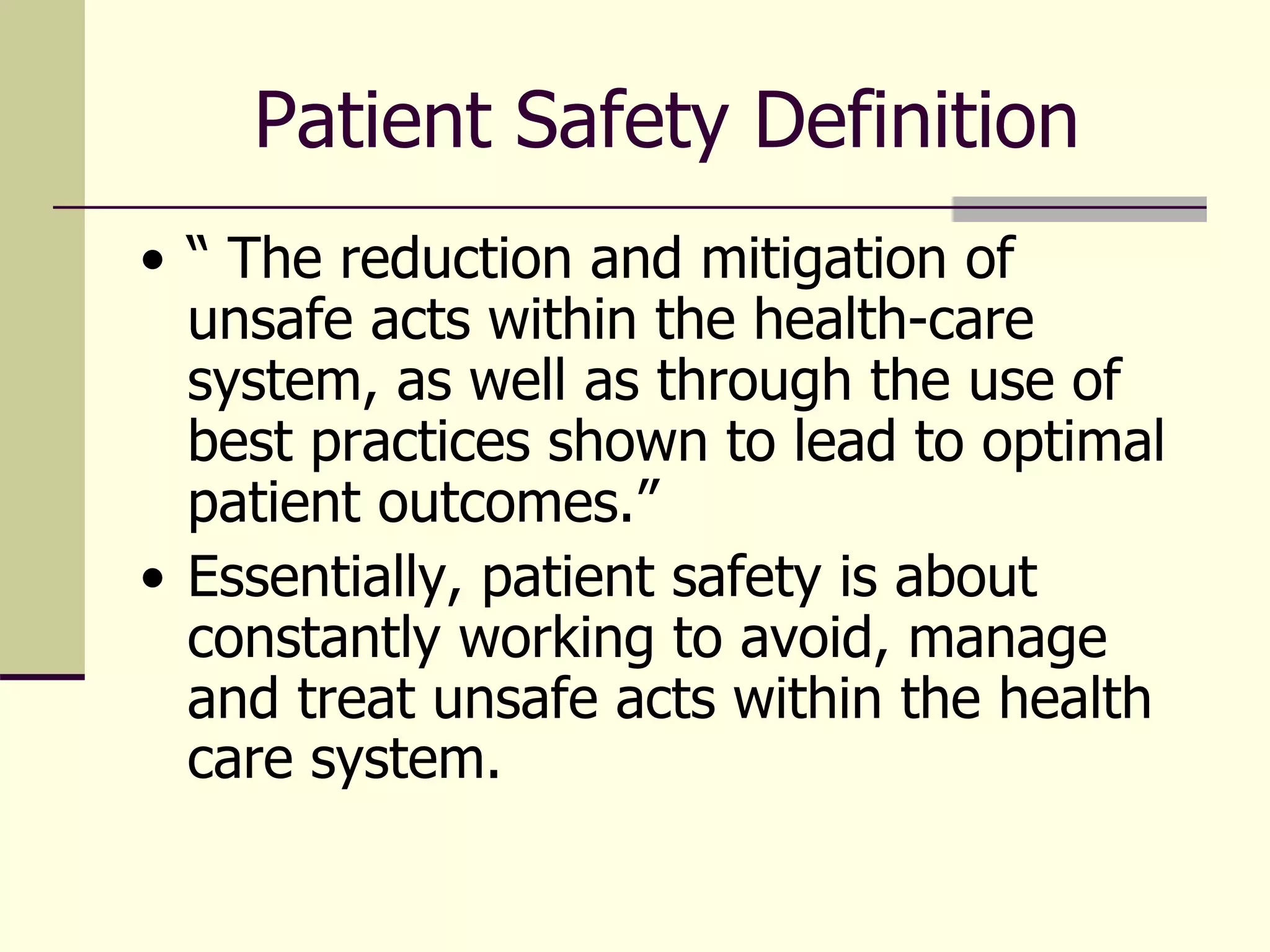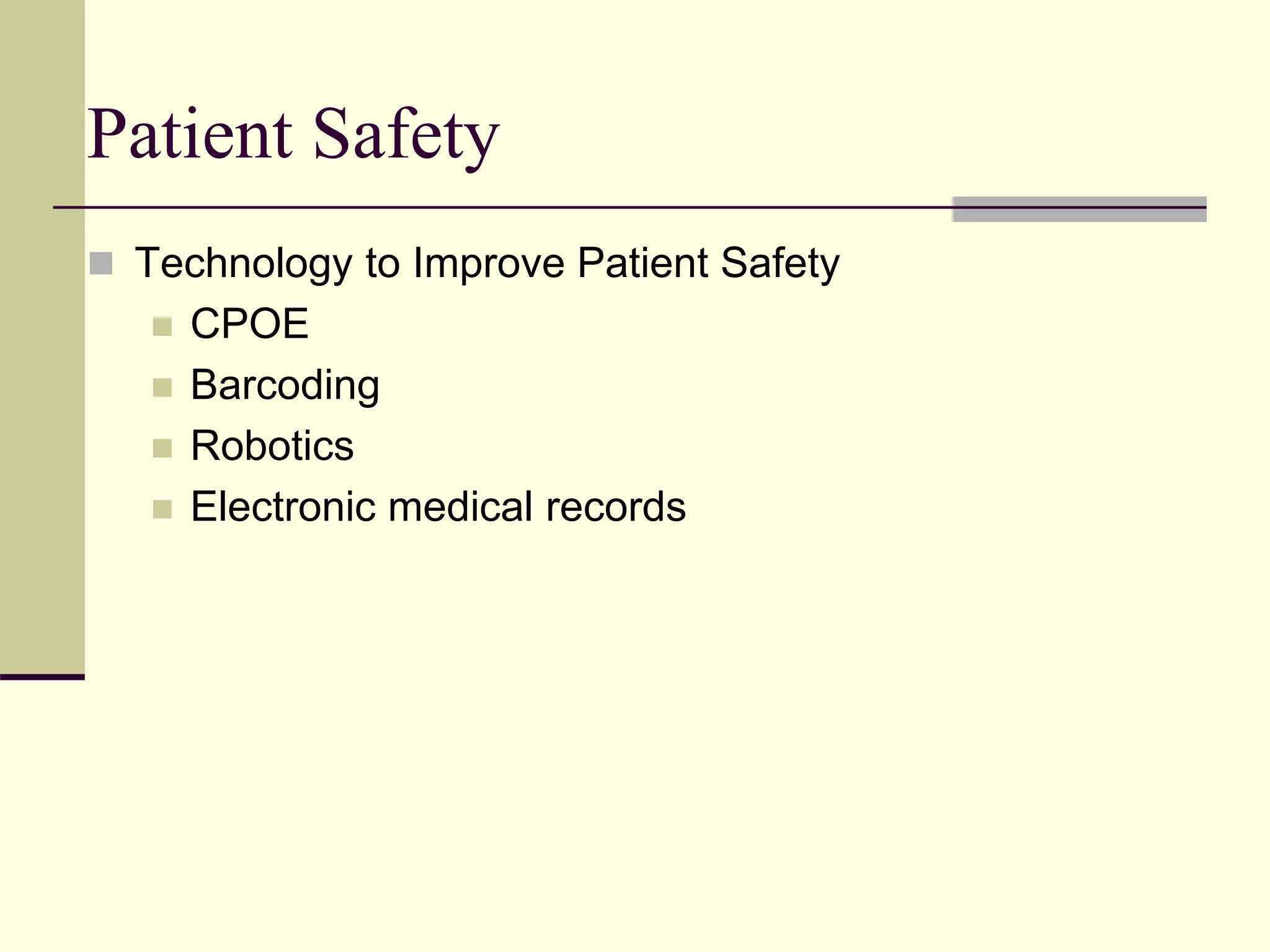This document discusses various aspects of patient safety, including definitions, challenges, common errors, and strategies to improve safety. It defines patient safety as efforts to reduce unsafe acts in healthcare and describes how both active errors and latent system failures can lead to accidents. The document outlines factors that contribute to errors, such as complexity, limited knowledge, and human factors. It also discusses approaches to improving safety through a culture of safety, disclosure of errors, human factors engineering, and use of checklists and protocols.
































































